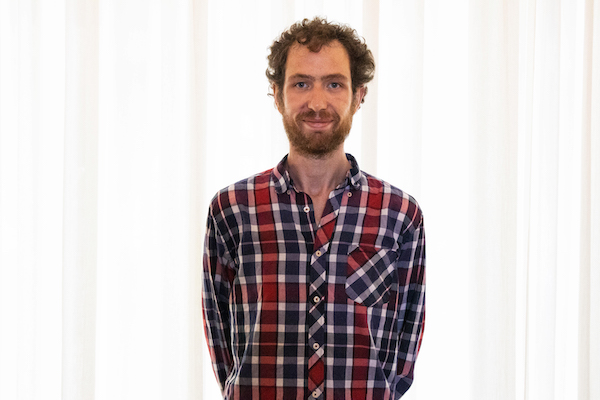Good people are the foundation stones of growing SMEs. The late Steve Jobs was very clear about this: “The secret of my success is that we have gone to exceptional lengths to hire the best people in the world.” For example, he believed the difference between a good programmer and a great one was a factor of 25 to 1 – which has a significant effect on the recruitment decision at Apple.
Large businesses like this may be in the fortunate position of having a raft of applicant for their vacancies. However SMEs often find it tough to find any, let alone ‘good’, people to fill roles. The UK reported the lowest rates of unemployment in a generation in September 2022, pointing at a nationwide labour shortage which is exacerbating the problem.
Research by a behavioural economics research fellow at the University of Exeter has concluded that great people are out there, but our ‘unconscious bias’ may be affecting our willingness to recruit them.
Inclusivity is an opportunity for SMEs
Dr Daniel Derbyshire has conducted unique research into unconscious (or ‘implicit’) bias in business and was  surprised by the findings. Unlike previous research into inclusive work, his is the first research to look at a potential effect of business size on implicit bias. He particularly looked at SMEs, an area that has had little research, to see whether bias affected their recruitment decisions.
surprised by the findings. Unlike previous research into inclusive work, his is the first research to look at a potential effect of business size on implicit bias. He particularly looked at SMEs, an area that has had little research, to see whether bias affected their recruitment decisions.
It is well documented that large companies are spending significant amounts of money on equality, diversity and inclusion (EDI) and unconscious bias training (UBT); McKinsey suggests up to $8 billion each year in the USA. Their aim is to arm their teams with the ability to make better recruitment decisions that overcome their unconscious biases.
Similarly, there has been a substantial increase in the number of diversity and inclusion based job roles over recent years, with LinkedIn suggesting a global rise of 71% from 2015 to 2020. People involved in recruitment and retention decisions – especially HR professionals – are also often specifically trained in EDI issues given their remit of ensuring compliance with relevant legislation such as the Equality Act 2010.
This is of course mainly in large companies where there are bigger training budgets than SMEs. Yet has throwing cash at ‘bias’ achieved results?
Dr Derbyshire thinks not. His work is part of The Inclusivity Project, which is funded by the European Regional Development Fund and brings together research from the European Centre of Environment and Human Health at the University of Exeter in collaboration with partners Age UK Cornwall and Isles of Scilly, disAbility Cornwall and Cornwall and Isles of Scilly Local Enterprise Partnership. The purpose has been to generate a better understanding of some of the challenges and opportunities facing employers in creating inclusive places to work, particularly for people who are over 50, disabled, or have a long-term health condition.
“The significant efforts of large companies in the EDI space, especially relating to disability, are ineffective at reducing unconscious bias,” he said. “We find it surprising that neither working for a large company nor being involved in HR have a significant effect on implicit attitudes towards disabled people and/or older people.”
While this points at an opportunity for SMEs to step in an overcome bias where larger firms are failing, Dr Derbyshire believes SMEs are yet to do so. “Large firms and SMEs are failing at inclusivity. We found that there are no differences between those who work for large compared to small companies despite the amount of money large organisations spend on training.”
His work is in the field of behavioural and experimental economics, using insights from a wide range of fields, such as psychology, neuroscience and cognitive science, to improve our understanding of human behaviour and, ultimately, society. His research was carried out in Cornwall, selected because it is similar to the national average and has a population shift that will be emulated across Britain’s cities in the next decade.
Cornwall’s levels of bias are consistent with elsewhere in the UK, and what is clear is that SMEs have the potential to create a more inclusive workforce and cherry pick those ‘great’ candidates that are currently being turned down simply because of their age or disability.
Older and disabled people in the job market
Dr Derbyshire’s colleague at The Inclusivity Project, Dr Esmaeil Khedmati-Morasae, has also conducted a research study into the job market in Cornwall using a systems mapping approach. This turns qualitative interview data into system maps, which show the interactions or effects between differing factors.
He concluded that there are self-sustaining negative employment practices among most SMEs that interact with each other and act as hurdles for the employment of disabled and older people in the region. These would likely be common to other areas of the country.
He identified that SMEs have misperceptions about people aged 55+ that reduce their risk tolerance when recruiting, which reduces the rate of recruitment of older people.
These misperceptions centre around beliefs that older people deliver lower performance (not being innovative or productive enough), are difficult to manage, and have poor health. This creates a self-sustaining recruitment problem for older people. Gaps appear on their CVs when they’re out of work, and employers then assume they are not good employees because of these periods of unemployment.
SMEs have similar misperceptions about disabled people. They believe disabled people need more time off, are less productive and less capable of doing work. They also fear both the costs of making reasonable adjustments for disabled people, and the regulations around employment of disabled people.
Then disabled people compete with able-bodied people for jobs that they repeatedly fail to win then they often look at the investment of time against remaining in the benefits system. This becomes a benefits system trap for the disabled. They do not risk exiting the benefits system, despite having the resources and skills that can be huge assets for businesses and society at large. The Office for National Statistics suggests disabled people’s chances of finding a job are 7.4 percentage points lower on average than those of non-disabled people.
Dr Khedmati-Morasae concluded that SMEs tend to rely on personal networks to find employees instead of using inclusive recruitment methods.
The Implicit Association Test
In his research Dr Derbyshire used the Implicit Association Test (IAT), a tool established in 1998 at Harvard University for measuring implicit attitudes and beliefs to reveal an individual’s hidden or subconscious biases. The tool is effective at raising awareness of unconscious bias.
Dr Derbyshire said: “There is significant implicit bias against disabled people among the business community causing an instant barrier. Stigma and stereotyping are cited as a key barrier to employment for disabled people with persistent myths about lower productivity, high physical adaptation costs and high absenteeism.
“The UK unemployment rate for disabled people for example, is nearly twice the rate for non-disabled people. Such inequalities place a substantial cost on the welfare system.
“The employer is effectively choosing between people. They’ve got multiple people they can choose from and they have to pick one of them, which is where the potential for unconscious bias comes in. As SMEs, they’ll also be resource constrained, and so they’ll not only have to pick and choose the most viable candidate for a vacancy, but also who to offer training and development opportunities to, and who to promote within the business.
“In smaller businesses these decisions are made by fewer people (or even just a single person), and so with less teamworking and collaboration there will be a greater risk of unconscious bias coming into play. ACAS recommends making decisions in groups to reduce the risk to the business from unconscious bias in decision making.
“Our findings also suggest that disabled people are underrepresented in the HR profession and in making hiring decisions. Addressing this gap will create more inclusive workplaces and in turn may in turn help to address the disability employment gap.”
Age is also an issue. A recent report by the OECD found that age-diverse workforces could raise GDP per capita by almost 19% in the next three decades. However a significant number of people aged 50+ stop looking for work and become ‘economically inactive’. For some this will be a conscious decision due to early retirement for family and financial reasons. However the main cause is ill health. Some find it difficult to work while others find it difficult to find employment. They then stop looking for work and this path correlates with employers’ bias towards disability.
The government published a review of bias training in 2021 that reconfirmed previous findings by the Equalities Commission. Despite large companies throwing millions at the problems, there is no evidence that bias training is effective, because bias training is varied, unregulated, and people often do it to ‘tick a box’ without measuring outcomes.
Dr Derbyshire believes it is time to lobby for improved training standards and measurement of unconscious bias training. “New, more effective and evidence-based strategies for tackling unconscious bias are needed, including regulation. We need to develop standards of bias training and measurements rather than a tick box approach and not abandon it.
“Lobby bodies must develop accreditation and encourage routine inclusion of disability and age data in equality and diversity reporting so that we can monitor progress properly and build an evidence base about what works – and what doesn’t.”
Above all Dr Derbyshire encourages decision-makers within SMEs to take the first step and do the implicit bias test, so they can interpret and understand their own biases. Ultimately this may change how they make recruitment decisions and increase inclusion in the business.
https://implicit.harvard.edu/implicit/takeatest.html
The findings of the research by Dr Derbyshire and Dr Khedmati-Morasae is available on The Inclusivity Project website: https://theinclusivityproject.co.uk/

